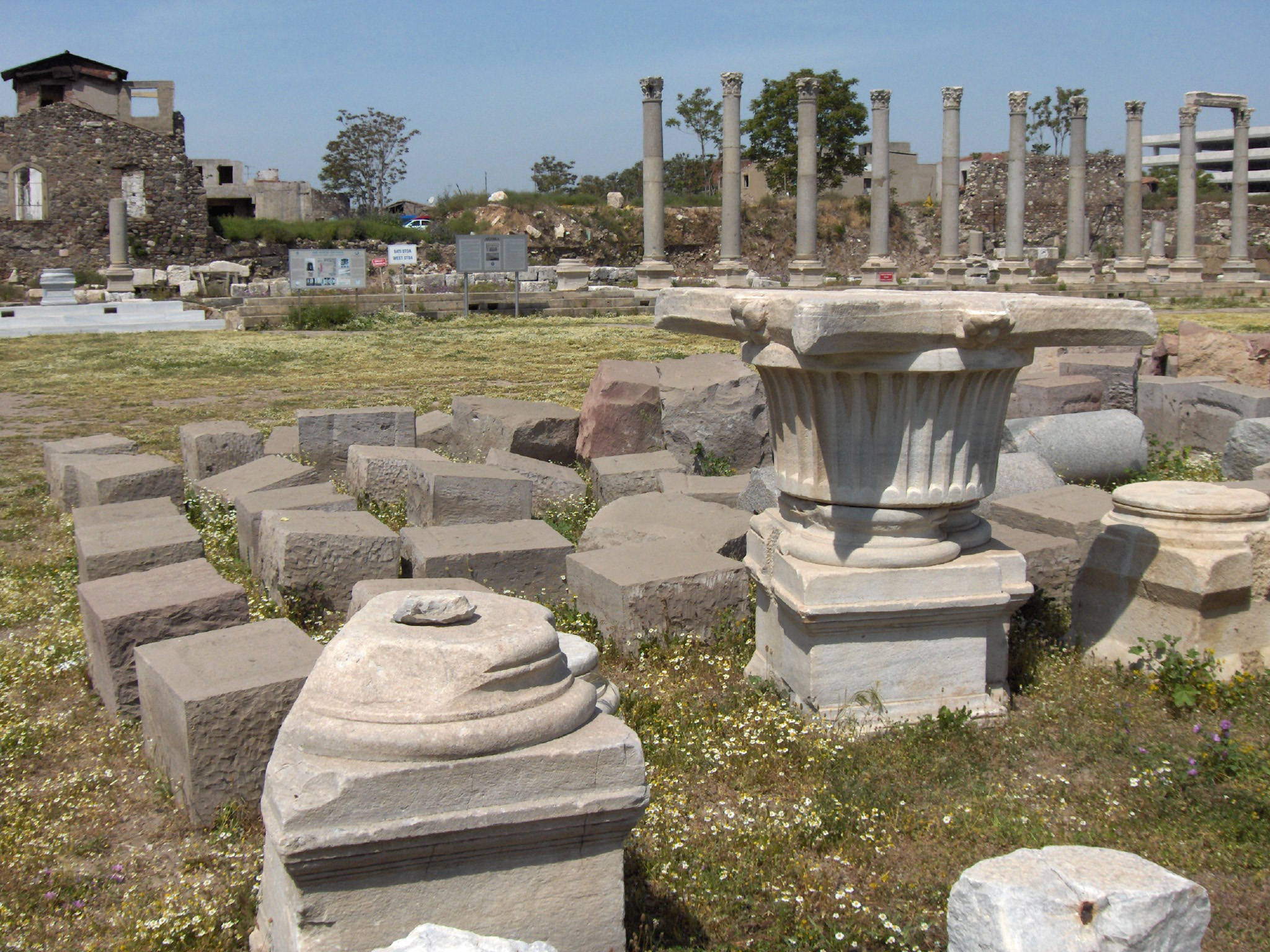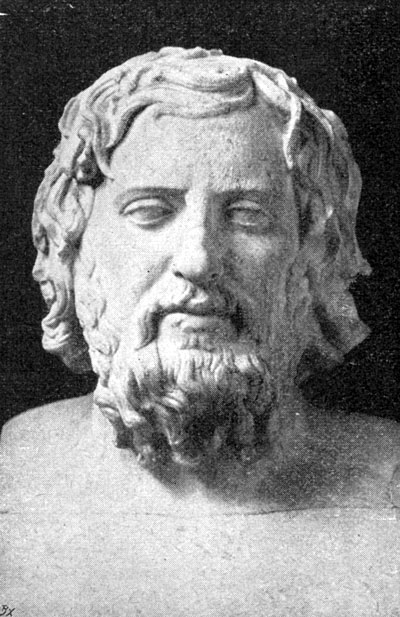|
Palaegambrium
Palaegambrium or Palaigambrion ( grc, Παλαιγάμβριον, 'Old Gambrium') was a town of ancient Aeolis, close to Pergamum. Palaegambrium is first mentioned in the ''Hellenica'' of Xenophon which gives knowledge about the region in 399 BCE. At that time the ruler of the city, as well as of Gambrium, was Gorgion, son of Gongylos.Xenophon, ''Anabasis Anabasis (from Greek ''ana'' = "upward", ''bainein'' = "to step or march") is an expedition from a coastline into the interior of a country. Anabase and Anabasis may also refer to: History * ''Anabasis Alexandri'' (''Anabasis of Alexander''), a ...'', 7.8.8-17. Its site is unlocated. References Populated places in ancient Aeolis Former populated places in Turkey Lost ancient cities and towns {{AncientAeolis-geo-stub ... [...More Info...] [...Related Items...] OR: [Wikipedia] [Google] [Baidu] |
Gongylos
Gongylos ( grc, Γογγύλος), from Eretria in Euboea, was a 5th-century Greek statesman who served as an intermediary between the Spartans and Xerxes I of the Achaemenid Empire, and was a supporter of the latter. After the defeat of the Second Persian invasion of Greece in 479 BCE, Gongylos was forced to flee and take refuge in the Achaemenid Empire. There, Xerxes granted him the territory of Pergamon in Asia Minor from circa 470-460 BCE as a reward. His descendants ruled over the city until at least 400 BCE, forming the Gongylid dynasty of satraps. Gongylos was one of the several Greek aristocrats who took refuge in the Achaemenid Empire following reversals at home, other famous ones being Hippias (tyrant), Hippias, Demaratos, and Themistocles. In general, those were generously welcomed by the Achaemenid kings, and received land grants to support them, and ruled over various cities of Asia Minor. According to Xenophon (''Anabasis'', 7.8.8-17), when he arrived in Mysia ... [...More Info...] [...Related Items...] OR: [Wikipedia] [Google] [Baidu] |
Gambrium
Gambrium or Gambrion ( grc, Γάμβριον and Γάμβρειον), also Gambreium or Gambreion (Γάμβρειον), was a town of ancient Aeolis and of Mysia, quite close to Pergamum. Its location is near Kınık and Bergama in İzmir province, in the Aegean Region of Turkey. It is on a hill named Hisarlık in the Bakırçay (ancient Kaikos) valley and very close to modern town of Poyracık. Gambrium is first mentioned in the '' Hellenica'' of Xenophon which gives knowledge about the region in 399 BCE. At that time the ruler of the city, as well as of Palaegambrium, was Gorgion, son of Gongylos.Xenophon, ''Anabasis'', 7.8.8-17. There was a star with twelve rays on the electrum Electrum is a naturally occurring alloy of gold and silver, with trace amounts of copper and other metals. Its color ranges from pale to bright yellow, depending on the proportions of gold and silver. It has been produced artificially, and ... coins of Gambrium. References Externa ... [...More Info...] [...Related Items...] OR: [Wikipedia] [Google] [Baidu] |
Ancient Aeolis
Aeolis (; grc, Αἰολίς, Aiolís), or Aeolia (; grc, Αἰολία, Aiolía, link=no), was an area that comprised the west and northwestern region of Asia Minor (modern-day Turkey), mostly along the coast, and also several offshore islands (particularly Lesbos), where the Aeolian Greek city-states were located. Aeolis incorporated the southern parts of Mysia, and is bounded by it to the north, Ionia to the south, and Lydia to the east. Geography Aeolis was an ancient district on the western coast of Asia Minor. It extended along the Aegean Sea from the entrance of the Hellespont (now the Dardanelles) south to the Hermus River (now the Gediz River). It was named for the Aeolians, some of whom migrated there from Greece before 1000 BC. Aeolis was, however, an ethnological and linguistic enclave rather than a geographical unit. The district often was considered part of the larger northwest region of Mysia. History According to Homer's ''Odyssey'', Odysseus, after his sta ... [...More Info...] [...Related Items...] OR: [Wikipedia] [Google] [Baidu] |
Pergamum
Pergamon or Pergamum ( or ; grc-gre, Πέργαμον), also referred to by its modern Greek form Pergamos (), was a rich and powerful ancient Greek city in Mysia. It is located from the modern coastline of the Aegean Sea on a promontory on the north side of the river Caicus (modern-day Bakırçay) and northwest of the modern city of Bergama, Turkey. During the Hellenistic period, it became the capital of the Kingdom of Pergamon in 281–133 BC under the Attalid dynasty, who transformed it into one of the major cultural centres of the Greek world. Many remains of its monuments can still be seen and especially the masterpiece of the Pergamon Altar. Pergamon was the northernmost of the seven churches of Asia cited in the New Testament Book of Revelation. The city is centered on a mesa of andesite, which formed its acropolis. This mesa falls away sharply on the north, west, and east sides, but three natural terraces on the south side provide a route up to the top. To the w ... [...More Info...] [...Related Items...] OR: [Wikipedia] [Google] [Baidu] |
Hellenica (Xenophon)
''Hellenica'' ( grc, Ἑλληνικά) simply means writings on Greek (Hellenic) subjects. Several histories of 4th-century Greece, written in the mould of Thucydides or straying from it, have borne the conventional Latin title ''Hellenica''. The surviving ''Hellenica'' is an important work of the Ancient Greek writer Xenophon and one of the principal sources for the last seven years of the Peloponnesian War not covered by Thucydides, as well as the war's aftermath. Xenophon's ''Hellenica'' Many consider this a very personal work, written by Xenophon in retirement on his Spartan estate, intended primarily for circulation among his friends, for people who knew the main protagonists and events, often because they had participated in them. Xenophon's account starts in 411 BC, the year where Thucydides breaks off, and ends in 362 BC, the year of the Battle of Mantineia. There is virtually no transition between the two works, to the extent that the opening words of ''Hellenica'' ... [...More Info...] [...Related Items...] OR: [Wikipedia] [Google] [Baidu] |
Xenophon
Xenophon of Athens (; grc, wikt:Ξενοφῶν, Ξενοφῶν ; – probably 355 or 354 BC) was a Greek military leader, philosopher, and historian, born in Athens. At the age of 30, Xenophon was elected commander of one of the biggest Ancient Greek mercenaries, Greek mercenary armies of the Achaemenid Empire, the Ten Thousand, that marched on and came close to capturing Babylon in 401 BC. As the military historian Theodore Ayrault Dodge wrote, "the centuries since have devised nothing to surpass the genius of this warrior". Xenophon established precedents for many logistical operations, and was among the first to describe strategic flanking maneuvers and feints in combat. Xenophon's ''Anabasis (Xenophon), Anabasis'' recounts his adventures with the Ten Thousand while in the service of Cyrus the Younger, Cyrus's failed campaign to claim the Persian throne from Artaxerxes II of Persia, and the return of Greek mercenaries after Cyrus's death in the Battle of Cunaxa. ''Anabasis ... [...More Info...] [...Related Items...] OR: [Wikipedia] [Google] [Baidu] |
Anabasis (Xenophon)
''Anabasis'' (; grc-gre, Ἀνάβασις ; an "expedition up from") is the most famous work of the Ancient Greek professional soldier and writer Xenophon. It narrates the expedition of a large army of Greek mercenaries hired by Cyrus the Younger to help him seize the throne of Persia from his brother, Artaxerxes II, in 401 BC. The seven books making up the ''Anabasis'' were composed circa 370 BC. Though as an Ancient Greek vocabulary word, ''ᾰ̓νᾰ́βᾰσῐς'' means "embarkation", "ascent" or "mounting up", the title ''Anabasis'' is rendered in translation as ''The March Up Country'' or as ''The March of the Ten Thousand''. The narration of the army's journey across Asia Minor and Mesopotamia is Xenophon's best known work, and "one of the great adventures in human history". Authorship Xenophon, in his '' Hellenica'', did not cover the retreat of Cyrus but instead referred the reader to the ''Anabasis'' by "Themistogenes of Syracuse"—the tenth-century Suda also de ... [...More Info...] [...Related Items...] OR: [Wikipedia] [Google] [Baidu] |
Populated Places In Ancient Aeolis
Population typically refers to the number of people in a single area, whether it be a city or town, region, country, continent, or the world. Governments typically quantify the size of the resident population within their jurisdiction using a census, a process of collecting, analysing, compiling, and publishing data regarding a population. Perspectives of various disciplines Social sciences In sociology and population geography, population refers to a group of human beings with some predefined criterion in common, such as location, Race (human categorization), race, ethnicity, nationality, or religion. Demography is a social science which entails the statistical study of populations. Ecology In ecology, a population is a group of organisms of the same species who inhabit the same particular geographical area and are capable of Sexual reproduction, interbreeding. The area of a sexual population is the area where interbreeding, inter-breeding is possible between any pai ... [...More Info...] [...Related Items...] OR: [Wikipedia] [Google] [Baidu] |
Former Populated Places In Turkey
A former is an object, such as a template, gauge or cutting die, which is used to form something such as a boat's hull. Typically, a former gives shape to a structure that may have complex curvature. A former may become an integral part of the finished structure, as in an aircraft fuselage, or it may be removable, being using in the construction process and then discarded or re-used. Aircraft formers Formers are used in the construction of aircraft fuselage, of which a typical fuselage has a series from the nose to the empennage, typically perpendicular to the longitudinal axis of the aircraft. The primary purpose of formers is to establish the shape of the fuselage and reduce the column length of stringers to prevent instability. Formers are typically attached to longerons, which support the skin of the aircraft. The "former-and-longeron" technique (also called stations and stringers) was adopted from boat construction, and was typical of light aircraft built until the ad ... [...More Info...] [...Related Items...] OR: [Wikipedia] [Google] [Baidu] |

_-_Turkey_-_10_(5747249729).jpg)




